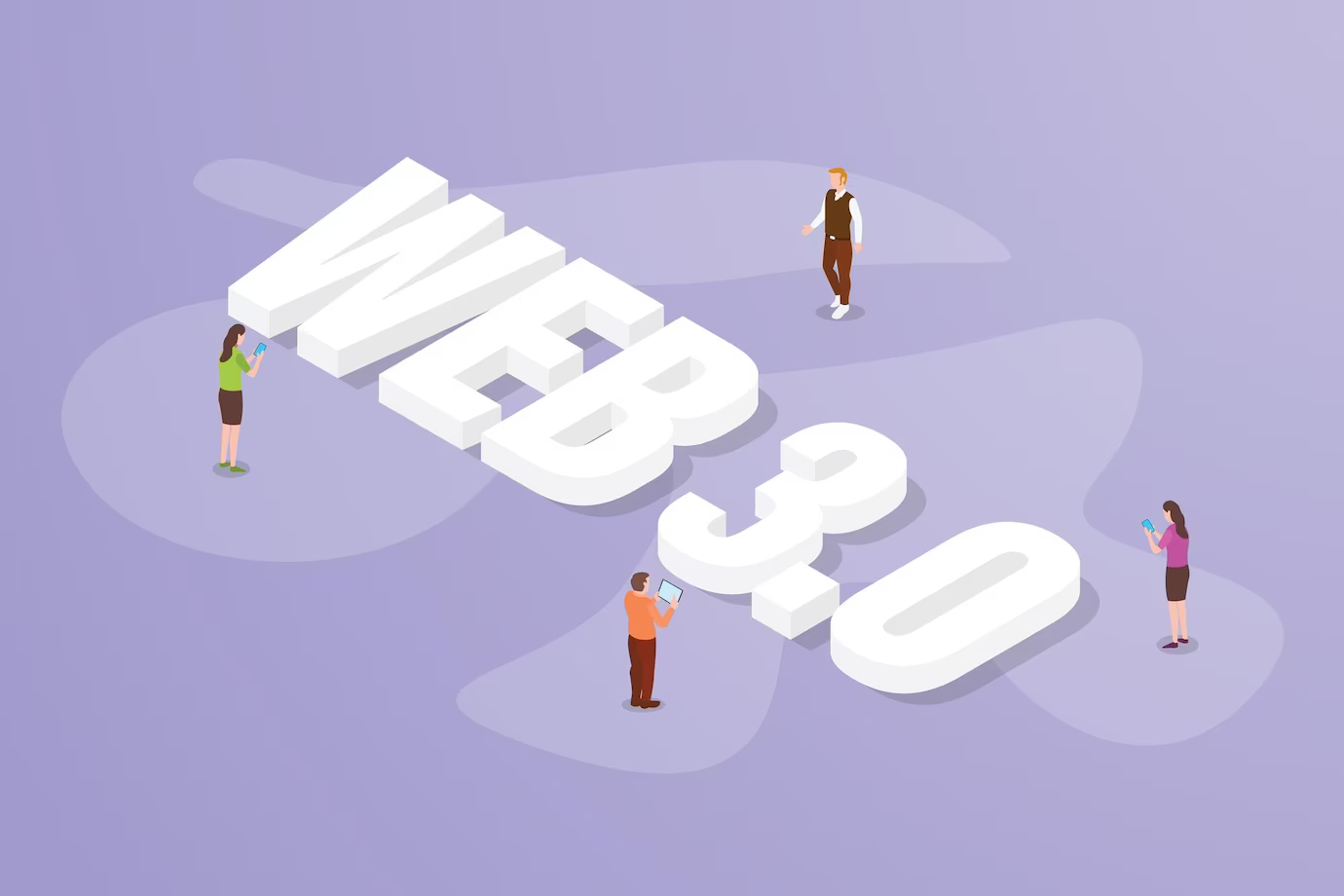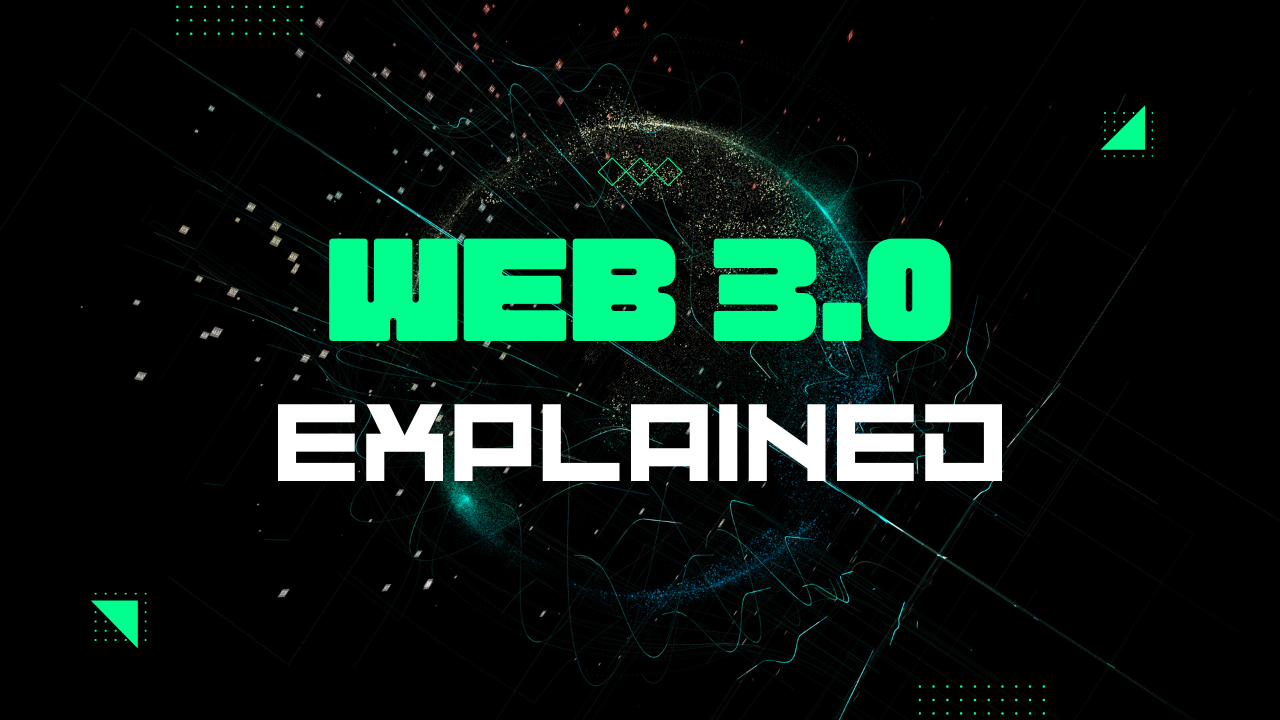Table of Contents
- I. Introduction
- II. Understanding Web 3.0
- III. Technologies Powering Web 3.0
- IV. Enhanced User Experience
- V. Decentralization and Trust
- VI. Web 3.0 in Everyday Life
- VII. Industries Revolutionized by Web 3.0
- VIII. Challenges and Limitations of Web 3.0
- IX. Impact on Business and Society
- X. Web 3.0 and Artificial Intelligence (AI)
- XI. Future Outlook and Predictions
- XII. Summary
- XIII. Frequently Asked Questions (FAQs)
I. Introduction
The internet has come a long way since its inception, transforming from a simple network of interconnected computers to a vast platform that has revolutionized the way we communicate, work, and conduct business. This evolution can be seen through the progression of various web versions, starting from the static text-based websites of Web 1.0 to the interactive and user-generated content of Web 2.0. Now, as we stand on the cusp of a new frontier, it is time to unveil the future of the internet – Web 3.0.
II. Understanding Web 3.0

Web 3.0 is the logical next step in the development of the internet. It is a concept that encompasses a range of emerging technologies and paradigms that are set to redefine the digital landscape. Unlike its predecessors, Web 3.0 is characterized by its ability to facilitate seamless machine-to-machine communication, enabling intelligent decision-making and automation. This transition from a human-readable web to a machine-readable web is at the heart of Web 3.0’s transformative power.
III. Technologies Powering Web 3.0
Blockchain technology and its role in Web 3.0
At the core of Web 3.0 lies blockchain technology, a decentralized and immutable ledger that ensures transparency and security. Blockchain enables the creation of decentralized applications (dApps) and smart contracts, which introduce new levels of trust and efficiency to digital transactions. By removing intermediaries and establishing a decentralized network, blockchain plays a pivotal role in powering and securing Web 3.0.
Smart contracts and decentralized applications (dApps)
Smart contracts, built on blockchain technology, are self-executing agreements coded with predefined rules. These contracts eliminate the need for intermediaries, ensuring transparency and efficiency in various sectors, such as finance, supply chain management, and real estate. Besides smart contracts, decentralized applications (dApps) utilize blockchain’s decentralized nature to offer innovative and secure solutions across multiple domains.
Interoperability and data interoperability
Web 3.0 emphasizes interoperability, enabling different systems and platforms to seamlessly communicate with each other. This facilitates the free flow of data, ensuring its accessibility and usability across diverse applications and services. Through data interoperability, Web 3.0 paves the way for a connected and integrated digital ecosystem.
IV. Enhanced User Experience
Web 3.0 places a strong emphasis on personalization and user-centric design to enhance the user experience. By leveraging the power of data, Web 3.0 tailors content and services according to individual preferences, making the internet a more personalized and engaging space. This approach aims to create a more intuitive and immersive digital environment, where users can seamlessly navigate and interact with information.
Personalization and user-centric design
Web 3.0 enables personalized experiences by leveraging user data to provide targeted content, product recommendations, and tailored services. By understanding individual preferences and behaviors, the internet of the future becomes a more relevant and useful tool, enhancing user satisfaction and engagement.
Immersive technologies and virtual reality (VR)
Web 3.0 integrates immersive technologies like virtual reality (VR) to create more interactive and engaging experiences. From virtual tours of exotic locations to immersive training simulations, VR brings a new level of realism and interactivity to the online realm, blurring the lines between the digital and physical worlds.
Augmented reality (AR) and mixed reality (MR)
In addition to VR, Web 3.0 also embraces augmented reality (AR) and mixed reality (MR). AR enhances the real-world environment with digital overlays, offering users a seamless integration of virtual and physical elements. MR takes this a step further by enabling dynamic interactions with both real and virtual objects, revolutionizing fields like gaming, retail, and education.
V. Decentralization and Trust
Web 3.0 reimagines the internet as a decentralized ecosystem, empowering individuals and minimizing reliance on intermediaries. This focus on decentralization fosters trust, privacy, and security, ensuring a more transparent and democratic online environment.
Peer-to-peer networks and their significance
In Web 3.0, peer-to-peer networks play a vital role in ensuring the decentralized nature of the internet. By enabling direct communication and collaboration between users, these networks remove the need for centralized authorities, allowing for greater user autonomy and control over their data.
Privacy and security in Web 3.0
Web 3.0 addresses the privacy and security concerns that arise from the increasing digitization of our lives. By incorporating cryptographic techniques and decentralized systems, Web 3.0 enhances user privacy, protects sensitive data, and reduces the risks associated with centralized data storage.
Trustless systems and distributed consensus
Through the use of blockchain technology, Web 3.0 introduces trustless systems that rely on distributed consensus mechanisms. These consensus algorithms ensure the integrity and immutability of data, eliminating the need for a centralized authority to validate transactions. As a result, trust becomes inherent in the technology itself, leading to a more trustworthy and efficient digital landscape.
VI. Web 3.0 in Everyday Life
Internet of Things (IoT) and connectivity
Web 3.0 expands the scope of connectivity, integrating the Internet of Things (IoT) into our everyday lives. IoT devices, ranging from smart home appliances to wearable technology, seamlessly interact with each other and the internet, creating a more connected and intelligent environment. Web 3.0 leverages this connectivity to deliver personalized and context-aware experiences, revolutionizing areas like healthcare, transportation, and home automation.
Seamless integration of data and services
Web 3.0 envisions a future where data and services seamlessly integrate across various platforms and devices. Whether it’s accessing files from different cloud storage providers or using a single interface to interact with multiple services, Web 3.0 simplifies and streamlines the digital experience, making it more efficient and user-friendly.
Autonomous systems and machine learning
Web 3.0 embraces the advancements in artificial intelligence and machine learning, enabling autonomous systems that can make intelligent decisions and adapt to user needs. From self-driving cars to intelligent virtual assistants, these autonomous systems revolutionize industries and enhance human productivity by automating repetitive tasks and enabling more informed decision-making.
VII. Industries Revolutionized by Web 3.0
Finance and blockchain-based solutions
The financial sector is one of the main beneficiaries of Web 3.0, with blockchain technology disrupting traditional banking systems and enabling decentralized finance (DeFi). Cryptocurrencies and decentralized applications are reshaping how we transact, invest, and manage our finances, offering greater accessibility, transparency, and financial inclusion.
Healthcare and telemedicine advancements
In the healthcare industry, Web 3.0 holds the promise of transformative changes through improved data interoperability, secure patient records, and telemedicine advancements. Through decentralized systems, patients can have greater control over their medical data while healthcare providers can offer more efficient and personalized care.
Education and personalized learning platforms
Web 3.0 presents exciting opportunities for education, empowering learners with personalized learning platforms and immersive educational experiences. By leveraging data analytics and AI technologies, Web 3.0 can tailor content and learning pathways according to individual needs, making education more engaging, accessible, and effective.
VIII. Challenges and Limitations of Web 3.0
While Web 3.0 brings a host of benefits, it also faces challenges and limitations that need to be addressed for widespread adoption.
Scalability issues and blockchain congestion
Scalability remains a significant concern for Web 3.0, particularly in the context of blockchain technology. As the user base grows and adoption increases, blockchain networks face issues such as slow transaction speeds and congestion. Solutions like sharding and layer-2 protocols are being explored to address scalability concerns.
Regulatory concerns and legal frameworks
The decentralized nature of Web 3.0 presents challenges in terms of regulatory compliance and legal frameworks. As the technology evolves, jurisdictions must develop appropriate regulations to ensure consumer protection, privacy, and security, without stifling innovation and growth.
Technological barriers to adoption
Widespread adoption of Web 3.0 technologies depends on overcoming technological barriers. User-friendly interfaces, robust infrastructure, and seamless integration with existing systems are essential to ensure a smooth transition from Web 2.0 to Web 3.0.
IX. Impact on Business and Society
Web 3.0 has the potential to disrupt traditional business models and reshape society in various ways.
Disruption of traditional business models
Web 3.0 introduces new business models that leverage decentralized technologies, removing intermediaries and enhancing peer-to-peer interactions. This disintermediation impacts industries such as banking, entertainment, e-commerce, and content creation, democratizing access and creating new economic opportunities.
Empowering individuals and fostering inclusivity
Web 3.0 empowers individuals by giving them more control over their data and personal information. By using cryptographic techniques, individuals can securely own, verify, and share their digital assets, increasing autonomy and fostering inclusivity in the digital realm.
Democratization of information and knowledge
Web 3.0 promotes the democratization of information and knowledge by enabling decentralized content creation and distribution. With blockchain-based platforms, creators have greater control over their work, while users have access to a wider range of diverse, accurate, and uncensored information.
X. Web 3.0 and Artificial Intelligence (AI)
Web 3.0 shares synergistic ties with artificial intelligence (AI) technology, creating new possibilities and challenges.
Synergy between Web 3.0 and AI technology
Web 3.0 provides the infrastructure and data for AI algorithms to thrive. With its capabilities in data aggregation, anonymization, and analysis, Web 3.0 fuels AI applications in various domains, including personalized recommendations, data-driven decision-making, and autonomous systems.
AI-driven algorithms in Web 3.0 applications
AI-driven algorithms form the backbone of many Web 3.0 applications, powering recommendation systems, fraud detection, sentiment analysis, and more. By continuously learning from data patterns, these algorithms optimize user experiences and provide intelligent insights.
Ethical considerations in AI and Web 3.0
The integration of AI and Web 3.0 raises important ethical considerations. As AI algorithms rely heavily on data, ensuring data privacy, preventing bias, and addressing issues of algorithmic transparency become crucial for an ethical and inclusive Web 3.0 ecosystem.
XI. Future Outlook and Predictions
The future of the internet holds exciting possibilities with Web 3.0 at its core.
Speculations on the future of the internet
As Web 3.0 continues to evolve, we can expect a future where the internet seamlessly integrates with our physical surroundings, enabling pervasive connectivity and interactions. This future may see advancements in fields such as Internet of Things (IoT), distributed computing, and intelligent systems, transforming our daily lives.
Potential advancements in Web 3.0 technology
Web 3.0 technology is poised to evolve further, with potential advancements in areas such as scalability, blockchain interoperability, and AI integration. These advancements will unlock new use cases and enable even greater innovation across various domains.
Social and cultural implications of Web 3.0
Web 3.0’s impact extends beyond technology and into social and cultural realms. It opens up avenues for digital sovereignty, decentralized governance, and collective decision-making, challenging existing power structures and creating new paradigms for collaboration and social interaction.
XII. Summary
In summary, Web 3.0 represents a significant shift in the evolution of the internet. By leveraging emerging technologies like blockchain, AI, and IoT, Web 3.0 offers enhanced user experiences, decentralized systems, and transformative applications across industries. As we embrace the future of the internet, it is crucial to understand the key features and benefits of Web 3.0 and the potential it holds for a more connected, secure, and inclusive digital world.
XIII. Frequently Asked Questions (FAQs)
Here are some frequently asked questions about Web 3.0:
- What is the main difference between Web 2.0 and Web 3.0?
- Web 2.0 focused on user-generated content and interactivity, while Web 3.0 emphasizes machine-to-machine communication, decentralization, and enhanced user experiences.
- Can Web 3.0 enhance user privacy and security?
- Yes, Web 3.0 introduces decentralized technologies, cryptographic techniques, and user-controlled data to enhance privacy and security in the digital realm.
- How can Web 3.0 impact traditional industries?
- Web 3.0 disrupts traditional industries by introducing decentralized models, removing intermediaries, and promoting peer-to-peer interactions, ultimately fostering innovation, efficiency, and inclusivity.
- What are the challenges that Web 3.0 faces today?
- Web 3.0 faces challenges such as scalability issues, regulatory concerns, and technological barriers that need to be overcome for widespread adoption.
- Will Web 3.0 eventually replace Web 2.0?
- While the transition to Web 3.0 is underway, it is unlikely that Web 2.0 will be completely replaced. Instead, Web 3.0 builds upon the foundation of Web 2.0, transforming and enhancing the internet as we know it.
Follow us on our Instagram – @squarebox.in
Read more interesting articles and blog by clicking here.




